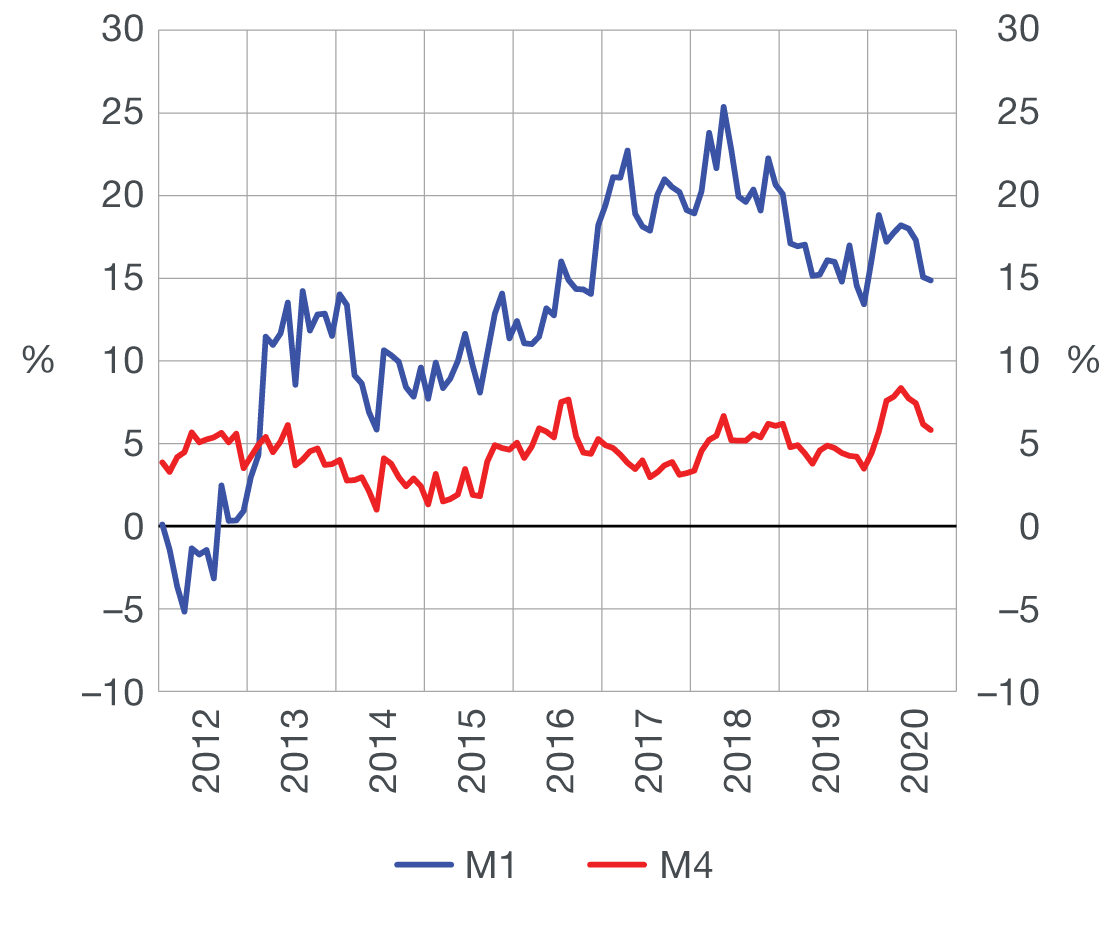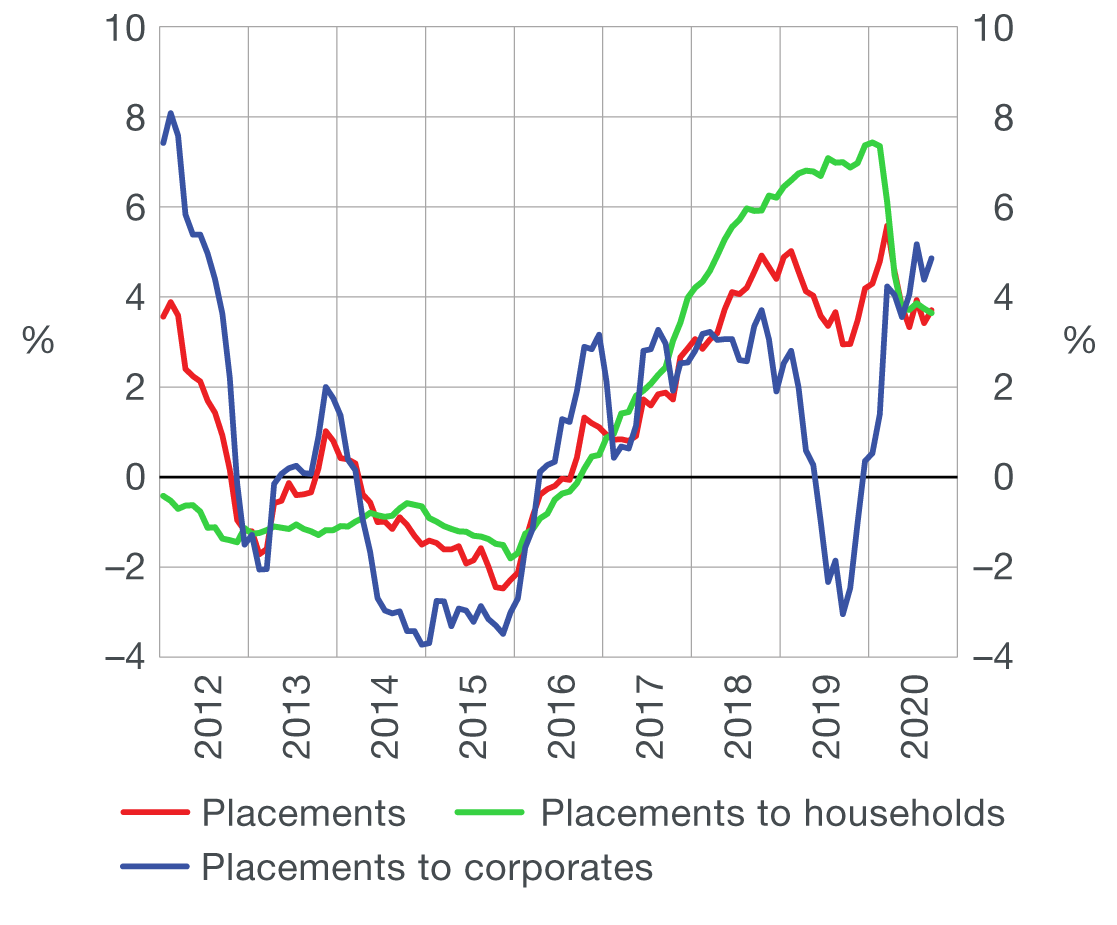From August 2023 the comments on statistics, a short description of selected, recently issued statistical data in the area of monetary statistics and the non-residents sector statistics, are no longer published. They are replaced by Statistical releases.
Comments on monetary developments for September 2020
Total liquid assets (M4) decreased slightly in September due to the fall in the net foreign assets of monetary institutions. The growth in M4 slowed down on an annual level.
Total placements of monetary institutions to domestic sectors (excluding the central government) held steady in September, with a fall in loans to non-financial corporations and a slight increase in loans to households and other financial institutions. As the drop in loans to non-financial corporations was a little more pronounced in the same month of the previous year, the growth in placements picked up marginally on an annual level.
Total liquid assets (M4)[1] decreased by HRK 1.2bn (0.3%) in September 2020 (Table 1). As regards the components of total liquid assets, money (M1)[2] was HRK 1.6bn less than in the month before, mostly as a result of the fall in demand deposits of non-financial corporations, as well as currency outside banks, which usually decreases in September as the peak summer tourist season comes to an end. At the same time, quasi-money grew by HRK 0.4bn, largely due to the rise in household foreign currency deposits. The monthly decrease in M4 was driven by the fall in the net foreign assets (NFA) of credit institutions, whereas the net domestic assets (NDA) of the monetary system remained unchanged. As a result, the annual growth in M4 slowed down from August to September (Figure 1).
| Figure 1 Monetary aggregates annual rates of change based on transactions |
Figure 2 Placements annual rates of change based on transactions |
 |
 |
| Source: CNB. |
Total placements of monetary institutions to domestic sectors (excluding the central government) held steady in September relative to August (transaction-based). Total loans, which account for 98% of total domestic placements (excluding the central government), also levelled off. As regard the structure of loans, loans to non-financial corporations decreased, while loans to households and other financial institutions edged up. Housing loans continued to account for the largest share of household loans, whereas general-purpose cash loans, which mostly declined for several months, held steady. Observed on an annual level, the growth in total placements picked up marginally, to 3.7%, with the rise in total loans and loans to non-financial corporations accelerating to 4.1% and 5.0%, respectively, due to the base effect, that is, a slightly larger decline in loans to that sector in the same period of 2019 (Table 2). As regards households, the annual growth in loans to this sector slowed down mildly in September (3.7%), influenced by a steady slowdown in the growth in general-purpose cash loans (from 2.0% to 0.9%), while the growth in housing loans continued to accelerate (from 8.3% to 8.4%), albeit at a slower pace than in the previous several months.
Table 1 Summary consolidated balance sheet of monetary institutions
in billion HRK and %

1 The sum total of asset items 2.2 to 2.8 of Bulletin Table B1: Consolidated balance sheet of monetary financial institutions.
2 The sum total of liability items 2 to 5 of Bulletin Table B1: Consolidated balance sheet of monetary financial institutions.
Source: CNB.
Table 2 Loans (excluding central government) and main components
in billion HRK and %

1 In addition to loans to households and corporates, they also include loans to the local government and other financial institutions.
2 The transactions show changes that exclude the effects of exchange rate changes, securities price adjustments, reclassification and write-off of loans, including the sale of loans in the amount of their value adjustment.
Source: CNB.
For detailed information on monetary statistics as at September 2020, see:
